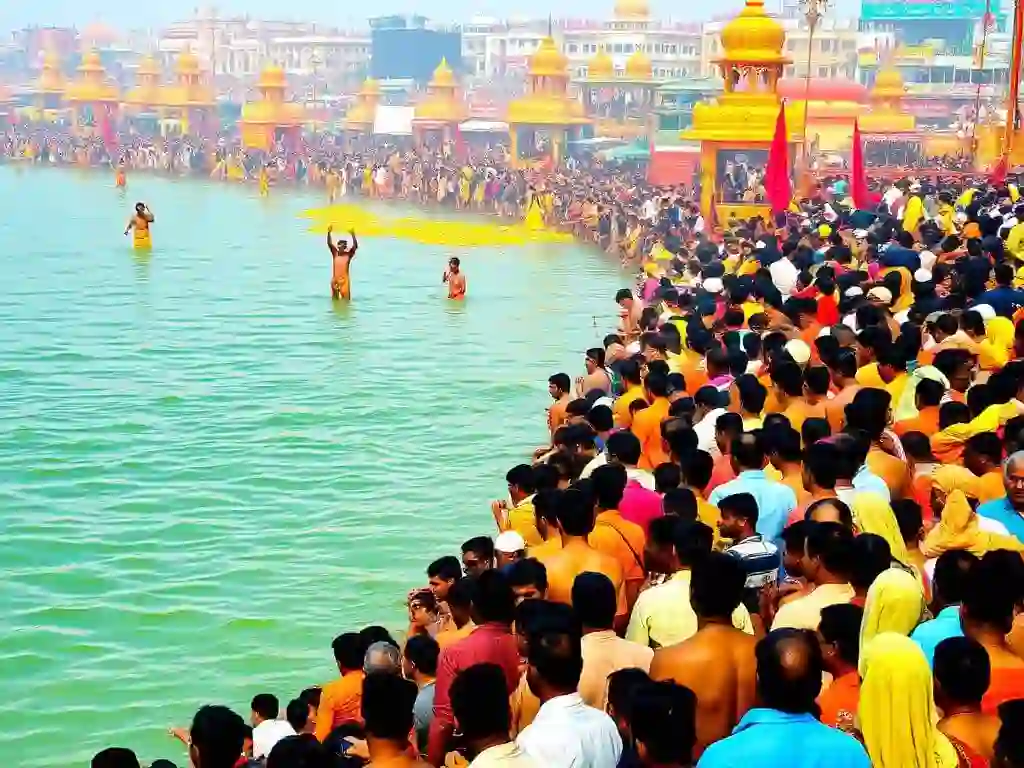
Mauni Amavasya is one of the most significant and spiritually enriching days in the Hindu calendar. In 2025, Mauni Amavasya will fall on January 29 (Wednesday), marking the new moon day (Amavasya) when devotees across India, especially those in sacred pilgrimage locations like Prayagraj (Allahabad), gather for a holy dip in the river. The day holds immense importance for spiritual cleansing and devotion, as it is believed that bathing in sacred rivers such as the Ganga, Yamuna, and Sarasvati on this day helps wash away one’s sins and brings peace of mind and soul.
Key Details Section: Mauni Amavasya – January 29, 2025
| Aspect | Details |
|---|---|
| Event Name | Mauni Amavasya |
| Date | January 29, 2025 |
| Day of the Week | Wednesday |
| Occasion Type | Hindu Religious Festival & Observance |
| Significance | The new moon day (Amavasya) in the month of Magha, observed for spiritual purification and introspection through silence (Maun). It is particularly significant during the Kumbh Mela. |
| Key Practices | – Observing Maun Vrat (Silence) – Taking a holy dip (Amrit Snan) in sacred rivers – Prayers, meditation, and chanting – Performing pind daan (ritual offerings to ancestors) – Acts of charity |
| Sacred Rivers for Dip | Ganga, Yamuna, Sarasvati (Prayagraj for Kumbh Mela, Haridwar, Ujjain, Nashik) |
| Associated Festival | Kumbh Mela (During the Mela, Mauni Amavasya marks the second Shahi Snan (royal bath)) |
| Key Beliefs | – Spiritual purification and absolution of sins – Moksha (liberation) from the cycle of birth and rebirth – Bringing peace and spiritual growth |
| Special Focus | Silence (Maun Vrat) is believed to enhance spiritual connection and self-awareness. |
| Historical Significance | Observed for centuries, with particular importance during the Kumbh Mela, an event occurring once every 12 years in Prayagraj. |
| Regional Celebrations | – Prayagraj Kumbh Mela: Millions of pilgrims gather for the royal dip – Other places: Devotees gather at ghats in Haridwar, Ujjain, Nashik, and various temples across India. |
| Spiritual Goals | Purification, liberation (Moksha), spiritual growth, inner peace |
Why is Mauni Amavasya So Special?
- The Sacred Dip (Amrit Snan): On Mauni Amavasya, devotees believe that taking a dip in the holy river on this auspicious day can wash away their sins and ensure liberation from the cycle of birth and death (Moksha). The “Amrit Snan” is considered more potent than the regular bath, and it is said that the water is filled with divine nectar (Amrit) that brings spiritual rejuvenation.
- Maha Kumbh Mela: During the Kumbh Mela, Mauni Amavasya is the second of the primary “Shahi Snan” (royal bath) dates. The first takes place on Makar Sankranti (when the Sun enters Capricorn), and the last occurs on the Basant Panchami (when the Sun moves into the Aquarius zodiac). Mauni Amavasya holds great importance as it is believed to be a highly auspicious day for spiritual purification.
- Silence and Spirituality: As the word “Mauni” suggests, devotees often observe silence on this day to focus entirely on their prayers, meditation, and inner reflection. This practice is believed to help them attain a higher level of spiritual awareness and calm.
- Celestial Alignment: According to Hindu astrology, the positioning of the planets on Mauni Amavasya is especially favorable for meditation and seeking blessings from the divine. It’s considered a perfect time to engage in personal reflection, self-discipline, and deep spiritual practices.
Rituals on Mauni Amavasya
- Holy Dip (Snan): Devotees gather at the riverbanks, especially in Prayagraj, Haridwar, Ujjain, and Nashik, to take a dip in the sacred waters of the Ganga, Yamuna, and Sarasvati (during Kumbh Mela). Pilgrims believe that this bath cleanses both the body and the soul.
- Maun Vrat (Silence Vow): On this day, many devotees take the vow of silence, abstaining from speaking to focus entirely on their spiritual practices, prayers, and chanting.
- Prayers and Pujas: Devotees offer prayers to the Sun God (Surya), the moon, and other deities. Special pujas are held at temples, and many people also perform rituals for their ancestors.
- Charity and Service: Many also believe that performing acts of charity on Mauni Amavasya will earn immense spiritual merit. Donations, especially to the poor and those in need, are considered an essential part of the observance.
- Pind Daan: It is common for people to perform pind daan (a ritual offering to deceased ancestors) on this day, ensuring that their ancestors’ souls attain peace.
Mauni Amavasya During Kumbh Mela
The Maha Kumbh Mela, held once every 12 years in Prayagraj, Uttar Pradesh, draws millions of pilgrims from around the world. During the Mela, Mauni Amavasya is one of the most significant bathing days. It is the time when the largest number of pilgrims gather to take the sacred dip. The second Amrit Snan of Kumbh Mela is considered the most auspicious, and it is believed that this ritual helps in gaining Moksha.
On this day, the Sadhus (holy men) and Nagas (naked ascetics) take their holy dip in the river, signifying the purification of their bodies and souls. The day is also marked by massive processions, rituals, and devotional chanting.
Spiritual Beliefs Around Mauni Amavasya
- Cleansing of Sins: It is believed that by observing Mauni Amavasya and performing rituals, one can cleanse themselves of all past sins and attain spiritual purity.
- Blessings for Prosperity: Many devotees visit the banks of the river with the hope of receiving blessings for health, wealth, and overall well-being.
- Liberation of Souls: Mauni Amavasya is also considered the perfect day for performing rites that ensure the liberation of one’s ancestors from the cycle of rebirth.
Mauni Amavasya 2025, falling on January 29, is a sacred occasion for spiritual cleansing, self-reflection, and devotion. Whether you’re participating in the Maha Kumbh Mela or observing the day at home, the day is a reminder of the importance of inner peace, devotion, and the power of silence in our spiritual journey.




























